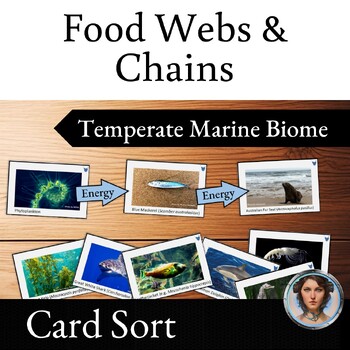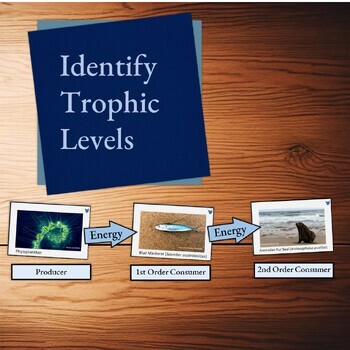Marine Food Webs and Food Chains Card Sort Activity - Temperate Ocean Ecosystem
- Zip
What educators are saying
Also included in
- ♥️ If you love a bargain, you're in the right place! ♥️This GROWING BUNDLE currently has a focus on biology sub plans and card sorts to keep your stress levels low and your students engaged.The price will increase as more products are added so BUY NOW while the PRICE IS LOW!SAVE OVER $170* Note thatPrice $60.00Original Price $241.22Save $181.22
Description
Engage students with this huge card sort activity to construct marine food chains and food webs. Use the suggestions to a lead discussion about how human activity affects temperate ocean food webs through climate change and the accidental introduction of invasive species. Use the provided labels to practice key vocabulary by assigning terms such as producer, detritivore, autotroph, etc to ocean organisms.
✨ Here’s What You’ll Get✨
- 32 organism cards
- Energy arrows
- Labels (including but not limited to, herbivore, carnivore, omnivore, detritivore, decomposer, heterotroph, autotroph, apex predator, producer, first-order consumer)
- information about what each species eats/how it gets energy
- 2 pages of suggestions on how to use
- A4 & US letter versions
TEACHERS LIKE YOU SAID...
⭐⭐⭐⭐⭐ Samuel C. said, "Unlike similar food web resources, there was a table explicitly stating what each animal would eat so I wasn't left guessing. Also had good organism variety."
⭐⭐⭐⭐⭐ J. J. said, "Having the scientific name of the species on the cards lead to a review of taxonomic ranks, which was a nice teachable moment."
⭐⭐⭐⭐⭐ Squigglez P. said, "I'm in my first few years of teaching so the suggestions on how to use was really helpful. Thank you."
_________________________
- FOLLOW my store by clicking HERE, so you don't miss out on sales and new resources.
- Permission to copy for single classroom use only. Purchase additional licenses if you intend to share this product.
- Having difficulty with a file? Visit the FAQs section, submit a help ticket, or ask a question on the Q& A tab before leaving feedback.
- Please provide feedback on this resource. Doing so will help you earn TPT credits that you can apply toward discounts on future purchases!
- © Steampunked Science
____________________________
Australian Science Curriculum Standards:
AC9S7U02
ACSSU112
ACSSU176






